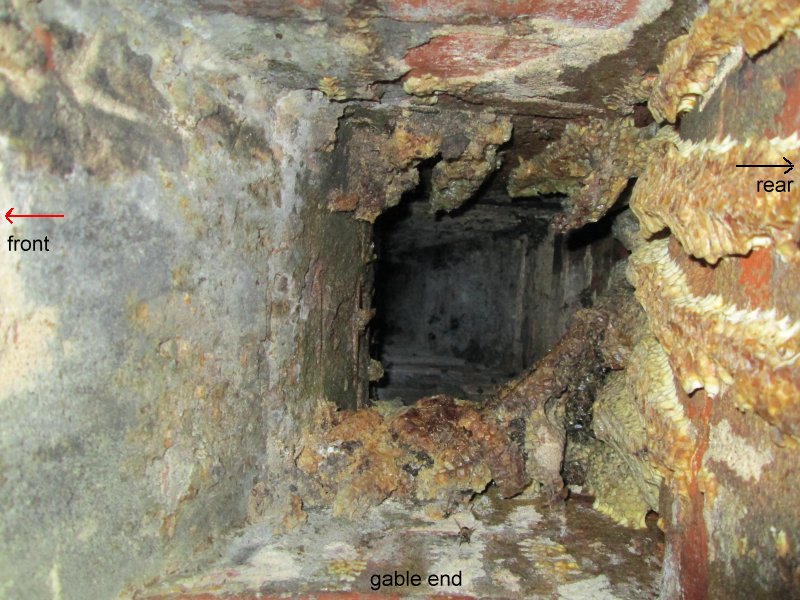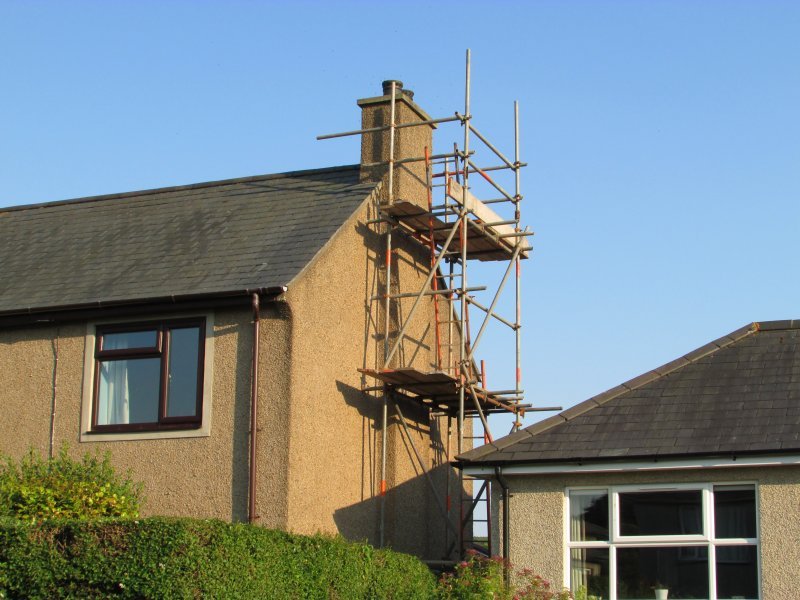
Llanbedrog chimney colony July 2014

5 July 2014
When the chimney cap was removed, this colony exploded very defensively, coating the veil with attacking bees. The decision was taken to set the bee vacuum to maximum speed to reduce the number of bees in the air and in the chimney as quickly as possible.
The first three photos were taken after about an hour of vacuuming, just before starting to cut out comb, by which time the cloud of angry bees was greatly reduced.
After most of the bees were cleared from the top of the comb, a 750 mm copper tube fitted with a funnel was inserted down the side of the flue and a small quantity of Dettol poured down it. This acts as a bee repellent. Bees were driven upwards towards the vacuum.
The combs were old, dark and leathery indicating that there had been a nest built earlier than the occupancy of the present colony, which the property owner said was about 18 months.
Below: top of nest after vacuuming before cutting comb
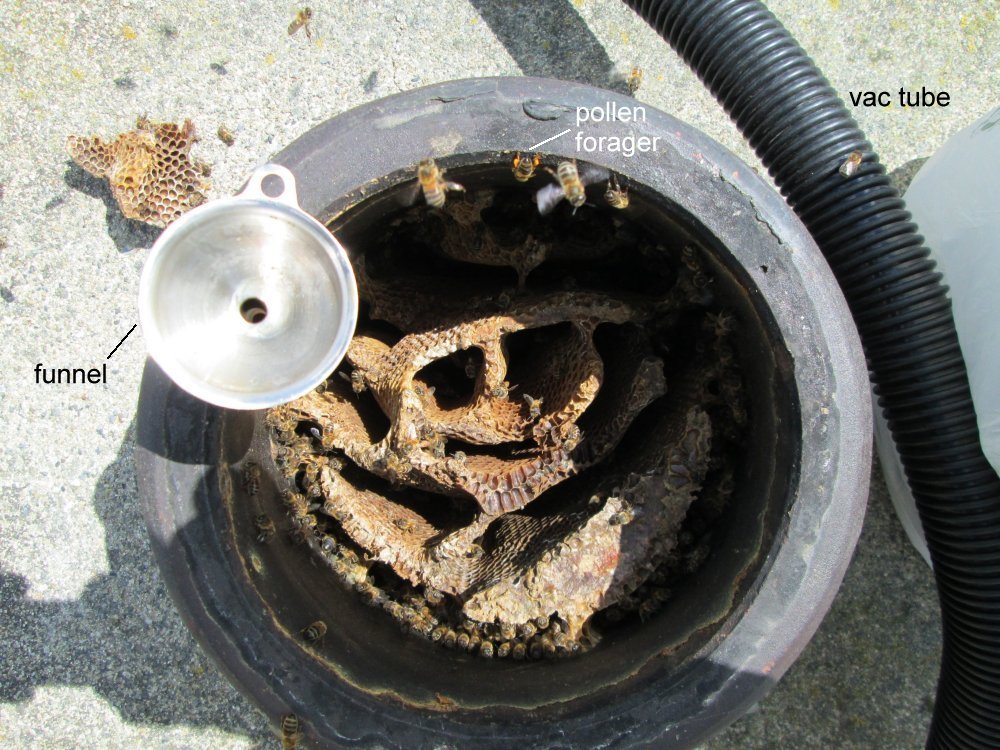
Below: closer view of top of nest after vacuuming before cutting comb
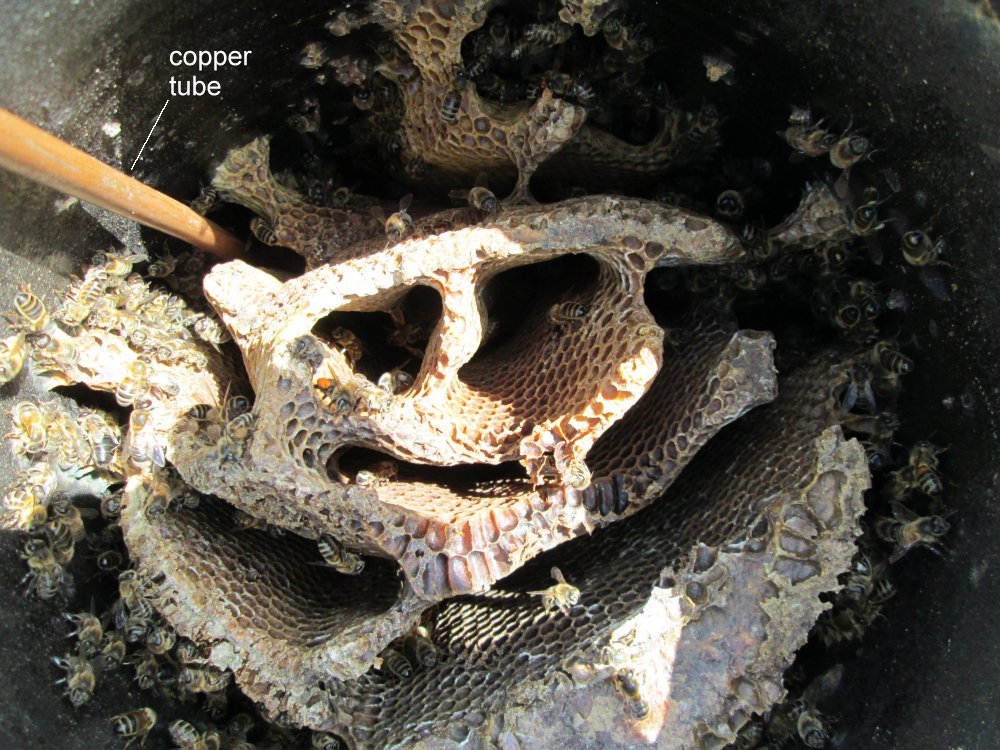
Below: even closer view of top of nest after vacuuming before cutting comb; three different types of pollen are shown
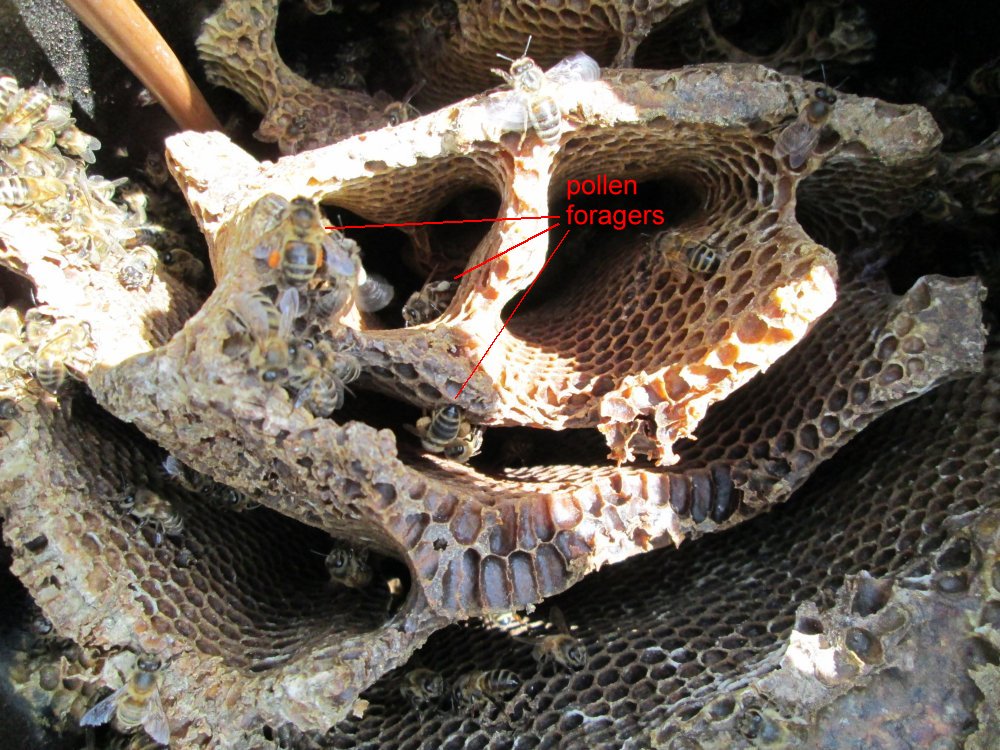
Below: after cutting out about 600 mm (24 inches) depth of comb
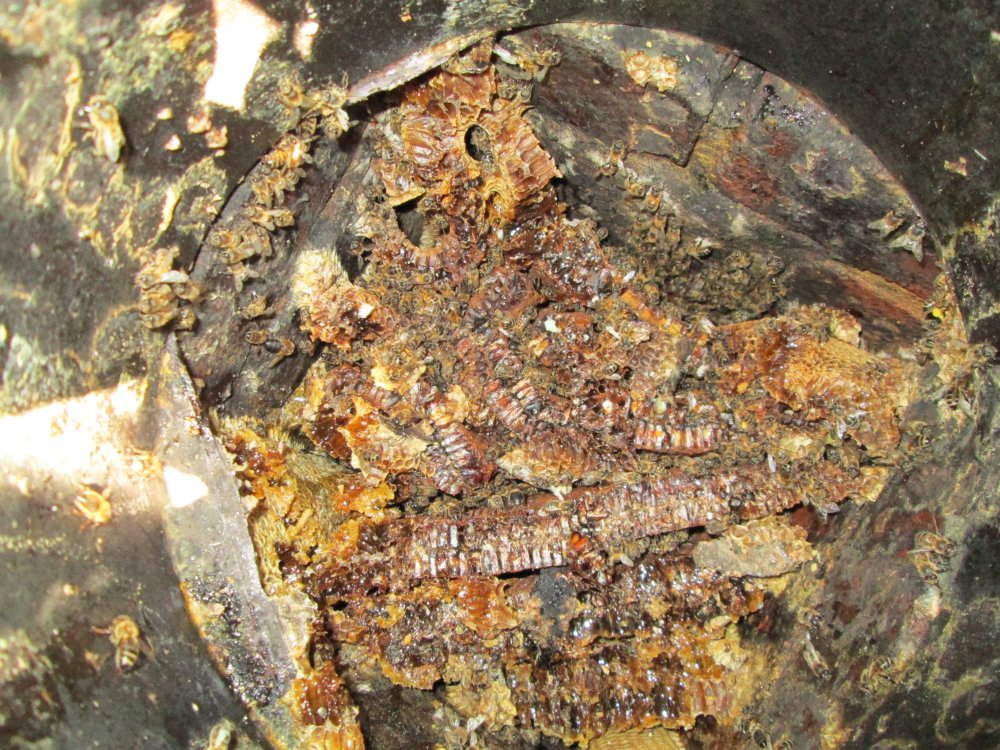
The tools available reached a little over a metre down the flue at which point further cutting out had to be abandoned. This zone appeared to be all honeycomb. Very little honey was near the top of the nest, and even that was limited to the sides.
Below: the flue after cutting the comb to a depth of 40 inches (1016mm). The red arrow indicates the point at which the flue ends its vertical section in the chimney, and appears to slope towards the rear of the house, i.e. towards the right in the photo.
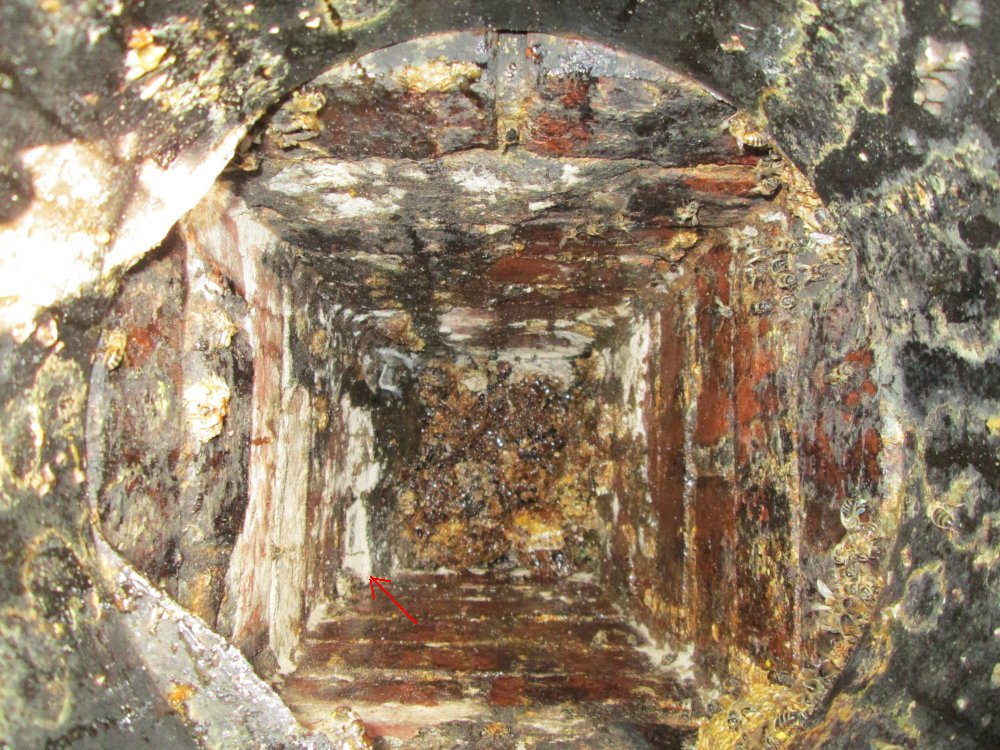
Of the invasive methods of removing the plug of residual comb, probably the least invasive would be to take out a few bricks from the flue at the appropriate level inside the loft. This may be indicated by the first bend in the flue's brickwork below the chimney. (On inspection 10 days later (see below) this plug had disappeared.
Below: the caps of both chimneys were insect-proofed with polypropylene mesh secured with cable ties.
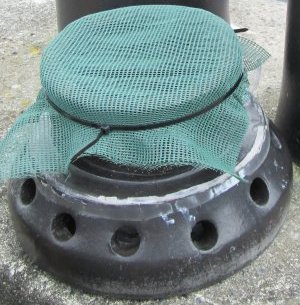
Below: the caps were re-seated in a bed of silicone sealant. (Connoisseurs of the landscape of Cymru will notice the profiles of the Moelwyns and the Rheinogs in the far distance.)
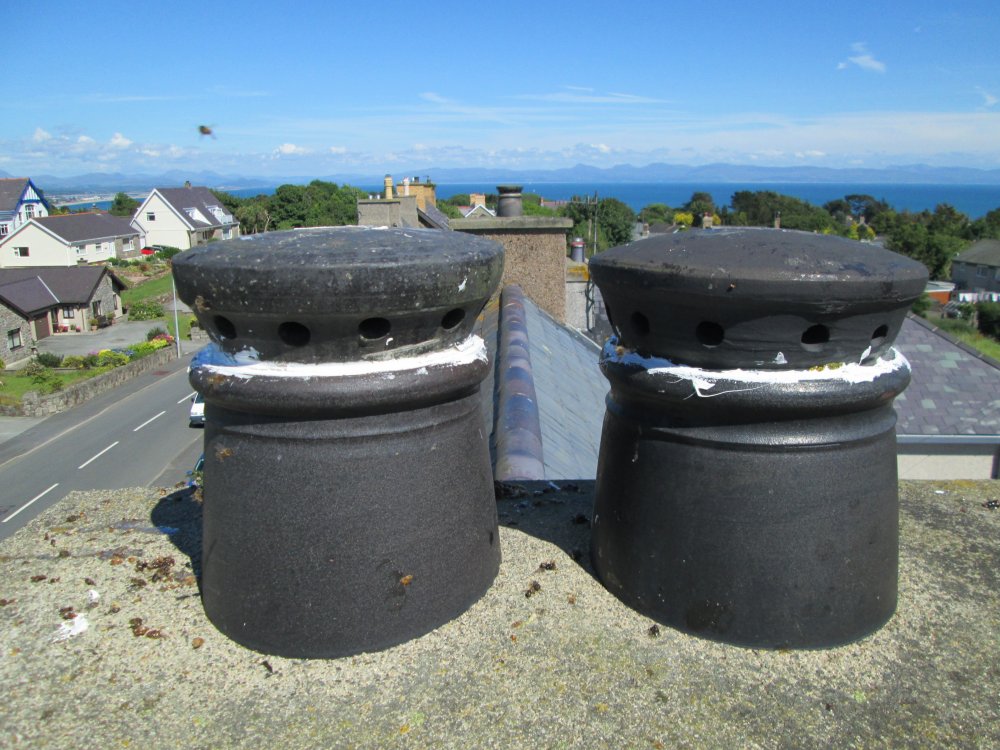
The volume of the flue occupied by the nest removed was estimated at 40 litres, which packed into three buckets totalling 35 litres and (net) weighing approximately 16 kg. It was not possible to salvage honey clean enough for consumption. The bait hive was weighed before and after emptying. The total weight of bees was 1.55kg with an estimated total number based on 90mg per bee as about 17,000.
Below: buckets of brood comb and honey comb
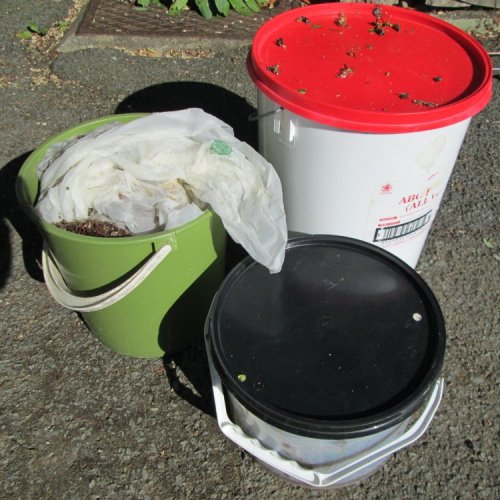
15 July 2014
On revisiting the site, one live bee was found round the cowl. The intention was to cover the plug of honeycomb with a 50 mm deep layer of sieved wood ash to minimise any risk of attracting robber bees or wasps. On inspection of the flue it was found that the comb plug had disappeared and what was apparently a bend to the rear of the property was merely a constriction sloping downwards briefly in that direction and that further down, after a short vertical section the flue appears to bend to the front of the property. A moan of bees was audible from the depths of the flue. The wood ash was applied and the cowl closed.
The owner's intention is to replace the polypropylene mesh insect guard with a cylinder of stainless steel mesh fitted inside the cowl. Compared with polypropylene, this is a more durable solution.
